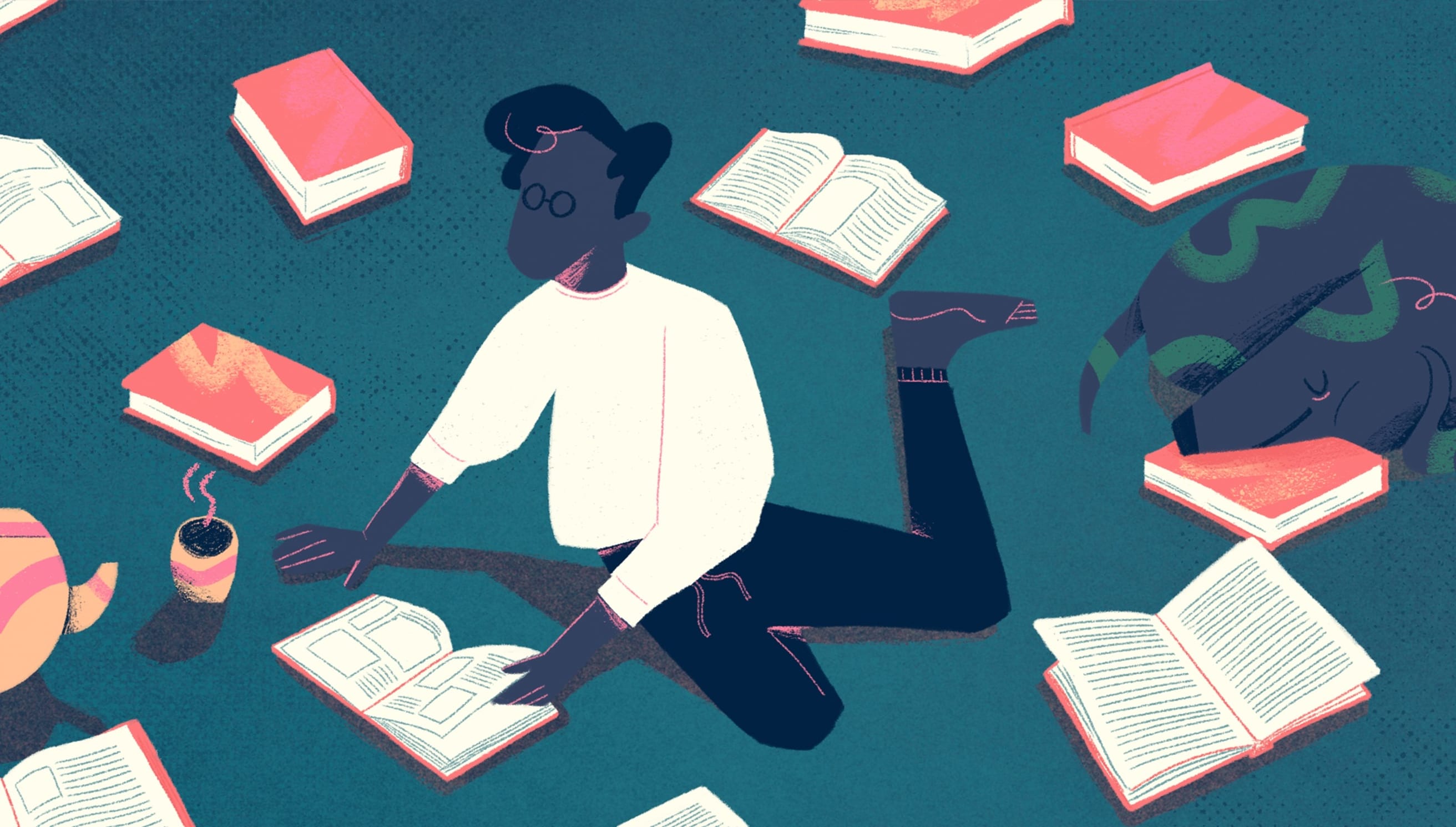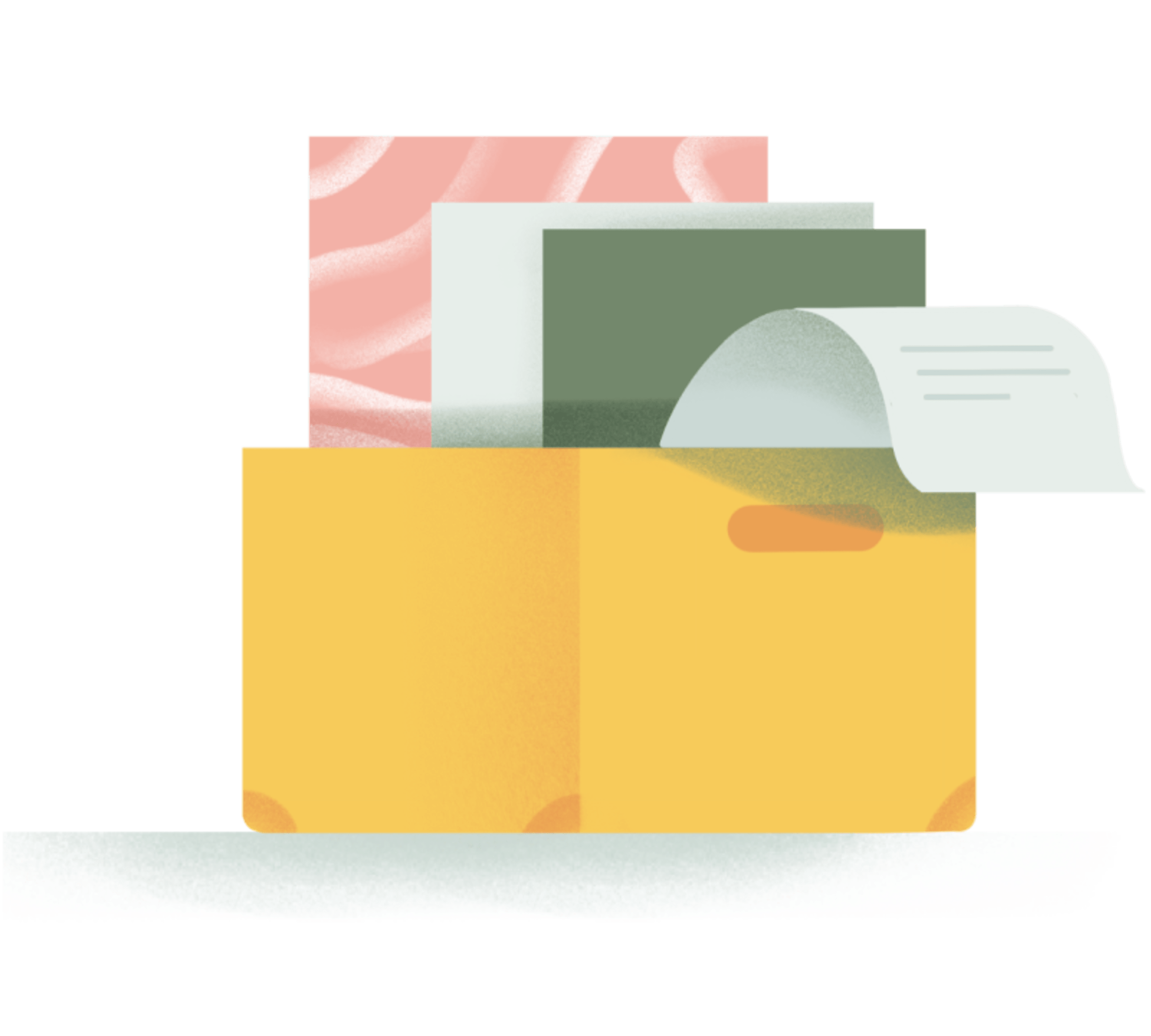Each January, I think: this is going to be the year I read a lot of books. And each December, I wonder why I didn’t. I’m not alone. Reading more is one of the most popular New Year's resolutions. And, like so many other resolutions, it often gives way to life’s other demands.
Last year, I decided to take a different approach to how I think about reading. In the past, I had it in mind that I should read more because it’s a good habit — I’m a writer, and I wanted to be more like people who read a book a week, or even a day. This time around, I focused less on the “should” aspect of reading and more on how to make time for it and how to actually enjoy it. I reconnected with why I most want to read: I learn new things, it improves my writing, it inspires me creatively, it helps me connect with people.
I also wanted to spend less time doomscrolling on social media and news apps, which — opposite from books — leaves me feeling like I’ve overloaded on information without remembering any of it.
My strategy paid off. I read 40 books, compared to 12 the year before. This total included several books in French, thanks to my French book club; several novels I read in book clubs, like Homegoing and Rebecca; and one long-time goal-read (and one of my first audio books) Democracy in America by Alexis de Tocqueville.
Based on my experience and that of many book lovers who inspired my approach, here's a guide on how to actually read more books in 2024.
Find your motivation
📚 “A reader lives a thousand lives before he dies, said Jojen. The man who never reads lives only one.” George R.R. Martin, A Dance with Dragons
I’ve always loved books and thought of myself as a reader, but when I finished school, I read much less than I had expected. Without professors, classes, and grades to push me, I needed to get (re)acquainted with reading’s internal rewards — what’s called intrinsic motivation. Students who have intrinsic reasons for reading are more likely to feel motivated to read and to better comprehend what they read.
Your motivation for reading will likely be personal. But if you need to get inspired, take some time to figure out which of the following benefits most speak to you:
Expand your knowledge
📚 “Human beings have been recording their knowledge in book form for more than 5,000 years. That means that whatever you’re working on right now, whatever problem you’re struggling with, is probably addressed in some book somewhere by someone a lot smarter than you. Save yourself the trouble of learning from trial and error–find that point. Benefit from that perspective.” ― Ryan Holliday
When you read, you’re building a body of knowledge that you can draw on in your day-to-day life — at work, in conversations, in your own personal decision-making. Virtually any question I’ve struggled with is tackled intelligently and thoughtfully in a book.
Improve your brain
📚 “He liked the mere act of reading, the magic of turning scratches on a page into words inside his head.”
― John Green, An Abundance of Katherines
Reading books is as beneficial for the brain as exercise is for the body. It promotes cognitive function, strengthens language processing, slows memory decline, and builds vocabulary.
However, simply because reading (or exercise) is good for us doesn’t make it easy to do. What motivates me is being aware of how my brain changes when I read. Neuroscientist Maryanne Wolf describes this unique experience in Proust and the Squid: The Story and Science of the Reading Brain:
“There are few more powerful mirrors of the human brain's astonishing ability to rearrange itself to learn a new intellectual function than the act of reading. Underlying the brain's ability to learn reading lies its protean capacity to make new connections among structures and circuits originally devoted to other more basic brain processes that have enjoyed a longer existence in human evolution, such as vision and spoken language.”
De-stress and relax
📚 “Reading is escape, and the opposite of escape; it's a way to make contact with reality after a day of making things up, and it's a way of making contact with someone else's imagination after a day that's all too real.”
― Nora Ephron
Being absorbed in a book transports us from the harried feeling we get from constant connectivity. After just six minutes of reading a book, stress levels decline significantly — more even than other relaxing activities, like listening to music, having a cup of tea, and taking a walk.
Feel less alone
📚 “You think your pain and your heartbreak are unprecedented in the history of the world, but then you read. It was books that taught me that the things that tormented me most were the very things that connected me with all the people who were alive, who had ever been alive.”
― James Baldwin📚 “Reading brings us unknown friends.”
― Honoré de Balzac
Reading has helped me to cope, especially this year with the isolating circumstances of the global pandemic. Books combat loneliness because they expose us — perhaps more than any other activity — to another person’s interior life, inspiring feelings of collective identity and belonging.
When we read, we also have a way to connect with others over something meaningful, one of the surest ways to reduce loneliness. This can happen through book clubs, classes, or literary events. Reading is even linked to improved social skills, like understanding others and having closer relationships. (All of these benefits led a United Kingdom policy group to recommend that reading be used to address society’s loneliness epidemic).
Spark creativity
By placing us in the interior lives of others, reading, especially literary fiction, makes us more empathetic, which is linked to creativity. It also inspires us to see the world and ourselves in new and different ways, which can un-stick us from creative ruts.
Fall asleep
📚 “Take a good book to bed with you — books do not snore.”
― Thea Dorn
For those who have trouble sleeping, reading a book is one of the most effective ways to nod off, because it tires our eyes and relaxes us. Using digital devices before bed, on the other hand, disrupts our body’s circadian rhythm and keeps us awake.
Reduce reading friction
📚 “Books are a uniquely portable magic.”
― Stephen King, On Writing: A Memoir of the Craft
One of the most effective ways to spend less time on habits like social media, online shopping, or playing video games, is to build “friction” into how you access them. You can also use the friction principle the opposite way for reading. Reduce your reading friction by making it as easy as possible to read books. Plan how you’ll buy or borrow books and the tools you’ll use to read, like e-readers and audiobook apps.
I even have a process for how I access a new book to make it easier to keep reading. First, I check if it’s at my library. If I can’t find it there, I’ll get it as an e-book or from an independent bookstore. If I can’t find it through any of these options, I’ll bite the bullet and order from Amazon.
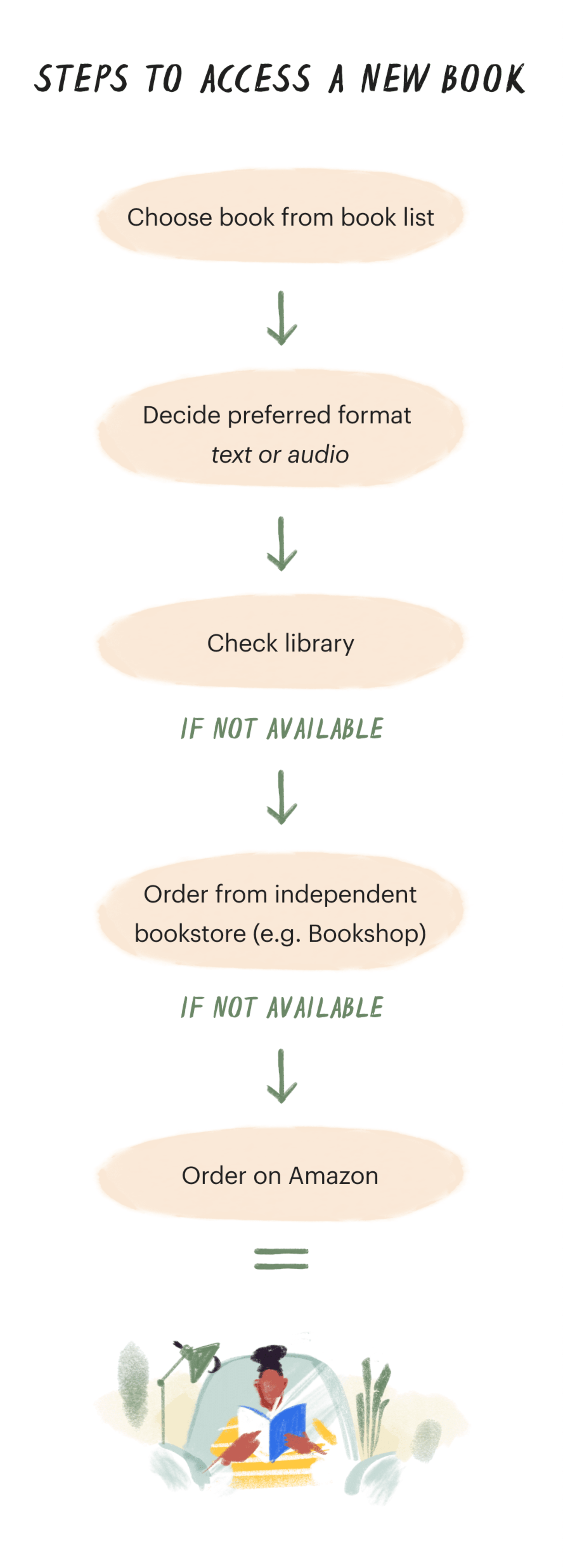
Library (& other borrowing)
📚 “[D]on't ever apologize to an author for buying something in paperback, or taking it out from a library (that's what they're there for. Use your library). Don't apologize to this author for buying books second hand, or getting them from bookcrossing or borrowing a friend's copy. What's important to me is that people read the books and enjoy them, and that, at some point in there, the book was bought by someone. And that people who like things, tell other people. The most important thing is that people read.”
― Neil Gaiman
Libraries are an easy and cheap way to read, and library systems around the world increasingly have e-reader and audiobook collections. If you don’t already have a library card, apply for one. Then use your library card to create an account for log-in to your library’s virtual catalog, where you can search for and request to borrow print, audiobooks, and e-books.
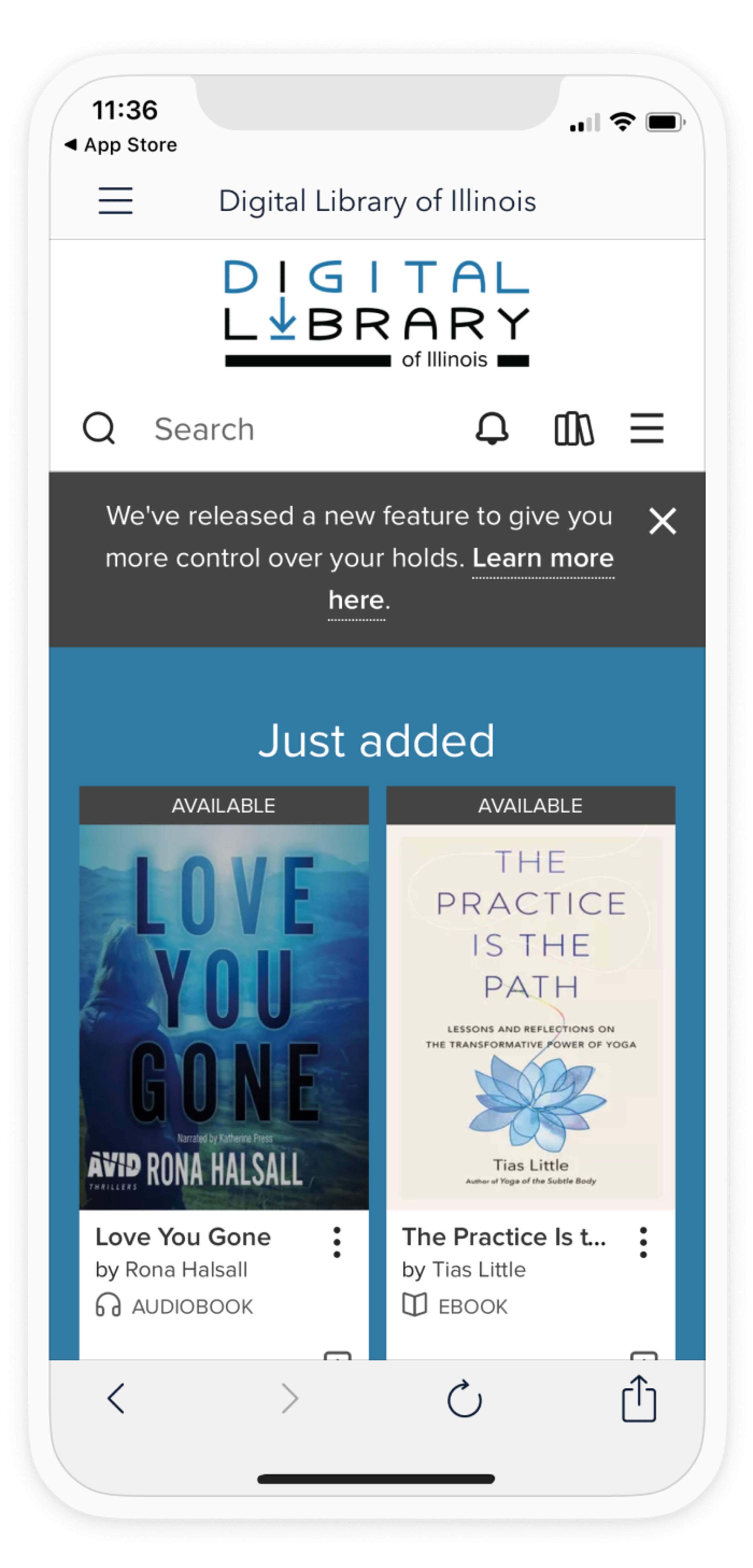
Friends and family are also a great way to borrow or exchange books, and get new ideas about what to read.
Print books
The advantage of buying print books over borrowing is that you can write in them, easily go back to them in the future, and you’re supporting authors. Here are some options for buying print books (with an emphasis on supporting local, independent bookstores):
- Book Riot: lists online, independent bookstores in Canada, the U.S., and the United Kingdom.
- Bookshop: order books from a pool of independent bookstores and even choose a specific bookstore to support.
- Powell’s Books: the largest independent bookstore in the world, based in Portland, Oregon.
- Guardian’s Best Bookstores: getting a little less U.S.-centric, a list of best bookstores worldwide, with many more recommendations and opinions in the comments section
- Indie Book Seller: look up independent bookstores near you.
- Used bookstores: Used books are cheaper and save trees. Check out your local used bookstore or online options like Abe Books, Thrift Books, and Amazon.
- Amazon: Amazon has its faults, but it has an enormous selection of books, many of which are sold by independent vendors.
- Barnes & Noble: has a large online shop and brick and mortar stores in the U.S.
E-books
📚 “Books are no more threatened by Kindle than stairs by elevators.”
― Stephen Fry
While some people prefer the reading experience of print books, I like to have both e-books and print books as options. The benefit to reading e-books is that e-readers are light, compact, and great for traveling (don't forget, you can download books while you’re on the road). E-books are typically accessed with an e-reader, but you can also read via tablet. More expensive versions include features like ergonomic design, waterproof material, and increased storage.
- Kindle: Amazon’s Kindle offers several editions with varying features, including the basic Kindle, Paperwhite, and Oasis. You have access to the large Amazon library and can check out e-books from your library.
- Kobo: Kobo has five types of e-readers at varying price points. You have access to the large Kobo library and can check out e-books from your library.
- Tablet: You can read a book on your iPad or other tablet device if you download an e-reading app like Kindle, Nook, or Kobo, on your device.
Audiobooks
Listening to audiobooks definitely counts as reading a book. The truth is there are strengths to each format (text is better for comprehending complex subjects, audio for recognizing emphasis), but having access to audiobooks makes it possible to read more (while running, cooking, driving, cleaning, walking the dog, etc.). Or as psychologist Daniel T. Willingham says, audiobooks “add literacy to moments where there would otherwise be none.”
You will need an audiobook app for your listening device(s), which is typically a smartphone. Audiobooks can be purchased à la carte or on a subscription basis. Here are the top audiobook apps, all of which have large libraries:
- Overdrive: for borrowing audiobooks and e-books from your library.
- Libby: also for library books. Produced by Overdrive, Libby offers an improved browsing experience but is only available for iOS and Android devices. It’s recommended if you only use one device to borrow e-books and audiobooks.
- Hoopla: another app for library books (though not as large a library as Overdrive).
- Libro: Libro is to audiobooks what Bookshop is to print, a way to purchase from your independent bookstore, with the choice of à la carte or a monthly subscription.
- Audible: Audible has a huge selection of titles, integrates with Amazon’s Kindle system, and is available as a subscription.
- Kobo: Kobo uses a subscription model for audiobooks, integrates with the Kobo system, and is available as a subscription.
Curate your reading list
📚 “I believe that during certain periods in our lives we are drawn to particular books — whether it's strolling down the aisles of a bookshop with no idea whatsoever of what it is that we want to read and suddenly finding the most perfect, most wonderfully suitable book staring us right in the face.” — Cecila Ahearn
The surest way to read more is to have books you want to read. Now that you have the tools for reading, here’s how to come up with a book list so you always have something ready to read.
Discover what you like
📚 “I’ve never felt guilty reading. I feel guilty playing poker on my phone and looking up crossword answers.” — Jess Walter in response to the question of what his “guilty pleasure” reads are
If you’ve had trouble reading in the past, maybe you were reading a style or genre that you’re not excited about. Read whatever you want, and don’t feel guilty if you feel like what you’re reading isn’t high-brow enough. Here are some ideas for discovering new books:
Try different genres, like the following:
- Fiction: Fantasy, Graphic Novel, Historical Fiction, Literary Novel, Mystery, Romance, Science Fiction, Young Adult
- Nonfiction: Biography (and autobiography and memoir), History, Humor, Journalism, Personal Development, Philosophy, Travelogue
Check out best-of lists, like the following:
- New York Times - 10 Best Books of 2023
- Goodreads - Most Popular Books Published in 2023
- Amazon - Best Sellers
- The New Yorker - Best Books 2023
- A Lifetime Reading List by book blogger and English professor John Pistelli
Get recommendations:
- Ask friends or family with similar tastes for their top picks
- Join Goodreads or get on #Bookstagram to see what friends are reading
Follow blogs or subscribe to e-newsletters, like the following:
- Book Forum
- Book Riot
- Bustle Books
- Guardian Books Blog
- The Millions
- The New York Times Book Review
- The New Yorker Page Turner
Keep a book list
Keeping a list of books that you want to read means you have plenty of books on deck for when you need something new. Keep your list simple with one of these approaches:
- Todoist: Create a project in Todoist called “Books” or use our Todoist reading list template to add books you want to read as tasks. You can add the book’s bookstore page as a link using the Todoist browser extension, so you have quick access when you want to buy and read it.
- Goodreads: Goodreads is a social media platform for books that, in addition to keeping up with friends and favorite authors, lets you add books and organize them into one of three default groups: “want to read,” “currently reading,” and “read.” You can also add a customized list.
- Pen and paper: Use a journal or a reading log to keep track what you want to read.

Choose books that match your mood
Whether you’re eager to learn more about a certain historical period, trying to learn how to get into a new profession, or want to escape into a fictional world, choosing books that match your mood, your environment, or what’s most on your mind will motivate you to read.
Sample before you read
You can often download free samples of books for your e-reader or audiobook app, or you can read the first part of a book on Amazon. Even if you enjoy reading paperbacks and hardcovers, digital samples could save you money and time on bad books.
Have multiple books at a time
When it comes to listening to music or watching TV, we have unlimited choices. You’ll be more likely to read if you think of books the same way, says Kevin Nguyen:
“We should think about it like you sit down and watch Netflix. Maybe one day you'll get to that queue of documentaries, but you're probably just going to watch ‘The Office.’"
This is where having multiple access points for books, like an e-reader, an audiobook app, and your local library and bookstore, really helps.
Set reading goals
📚 In the case of good books, the point is not how many of them you can get through, but rather how many can get through to you. - Mortimer J. Adler, author of How to Read a Book: The Classic Guide to Intelligent Reading
Although establishing a reading habit and making reading enjoyable is the most effective way to read more books, setting reading goals might help to motivate you.
Set a numbers goal
One way to read more is to set a goal to read a certain number of books per year. Be ambitious but realistic. Rather than trying to aim for a number of books you feel you “should” be reading (or the number of books Bill Gates reads), aim just a little bit higher than the number of books you read this past year or past month. If you get busy and go a while without reading, that’s okay. Come back to it when you can, and re-set your goal if you need to. You can use the Goodreads’ book challenge to keep track of your progress.
Jackie Clair, who blogs about books has several strategies for reading as many as 60 to 70 books a year:
“Tracking my reading [on Goodreads] has helped me increase the amount of books I can read each year and I also think being aware of all the great books coming out throughout the year has motivated me to want to get to them. I also buy a lot of books and my massive TBR [to be read] pile has me feeling guilty and wanting to read more to get through it!
...Or don’t set a numbers goal
A drawback of setting a goal to read a certain number of books each year is that it can incentivize choosing books because they’re shorter or easier, hurrying through books, or losing focus on other reasons you’re reading — what’s called "inattentional blindness." Even if the goal is achieved, if reading becomes more like a race than an enjoyable experience, it might turn you off.
This was the experience of Chad Hall, who one year set and exceeded the goal of reading 80 books:
“Over the span of the entire year, I feel like I learned very little. I read more and somehow knew less. It seems that the faster the consumption, the lower my comprehension became. I know now that an audiobook at double speed is the exact speed limit of my understanding.”
Other types of goals
If you like setting goals but don’t want to hold yourself to a number, here are a few other ways to go about goal setting:
- Pages: Commit to reading a certain number of pages a day (more on how to do that below)
- Reading challenge: If you’re trying to read more of a certain genre, author, or subject matter, try out a reading challenge. Book Riot’s 2024 reading challenge for instance includes “read a book that takes place in a rural setting” and “read a horror book published by an indie press”.
- Book clubs: Reading is usually a solitary activity, but that doesn’t mean you have to do it alone. Joining a book club helps you stay accountable and connect with others. You can join a friends’ book club, check with your local library, or search online for book clubs based on your interest. Check out Book Riot’s guide for joining book clubs.
Build a reading habit
The only way to make a goal like reading more books sustainable is to make it a habit. To build a new habit, start small; stay consistent in time, setting, and even beverage; be patient and celebrate small improvements; forgive yourself for lapses (don't let perfect be the enemy of good); and ultimately be in touch with the inner reward and joy it provides.
Make it easy to start
Getting started is often the hardest part of any goal. You can try what James Clear calls a “gateway habit,” a simple gesture that sets a habit in motion, such as putting on running shoes before a run:
“The more you ritualize the beginning of a process, the more likely it becomes that you can slip into the state of deep focus that is required to do great things....Make it easy to start and the rest will follow.”
In the case of reading a book, a gateway habit could be making yourself a cup of coffee or tea.
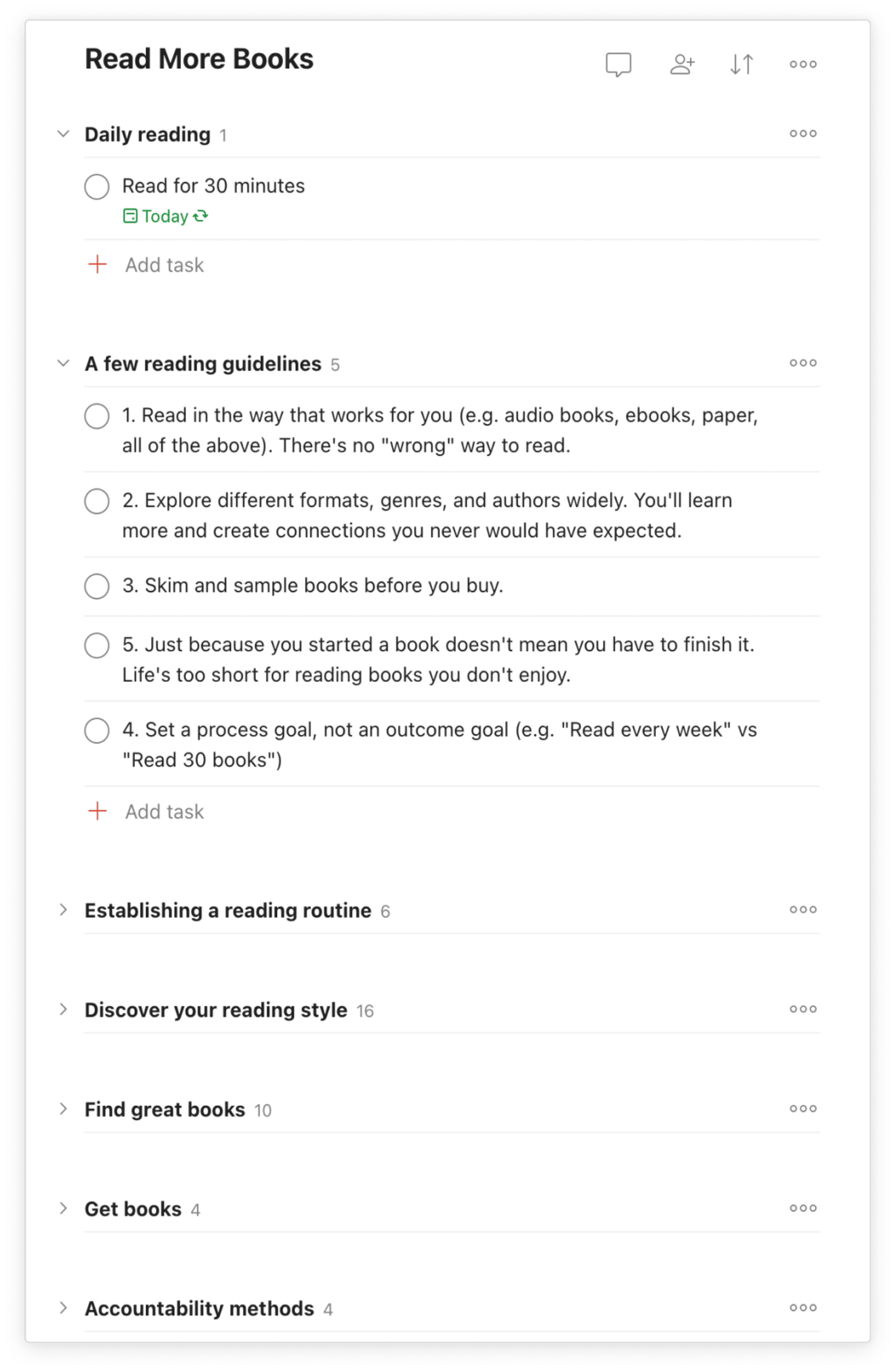
Start small
Building a habit is like driving a car; you can’t go from 0 to 100 right away. It’s more important to read consistently than as one marathon session followed by long stretches of nothing.
Set a goal to read just a little more each day than you normally do. If you don’t read at all, you can set a goal to read 3-5 pages a day. If you normally read around 25 minutes each day, read for 30.
If you use Todoist, create a task that recurs every day with the number of pages or amount of time you want to read. Enjoy ticking it off when you've accomplished it.

Read at a certain time of day
Setting a specific time of day when you read conditions you to make it a routine. The evening is a good choice because it’s a device-free way to relax at the end of the day and help fall asleep. You can also try the morning, like James Clear, who reads 20 pages when he gets out of bed. “Then the urgencies of the day don't get in the way,” he says. This is also a great substitute for grabbing your devices right after you wake up.
Multi-task with audiobooks
Multi-tasking usually doesn’t work, especially if you’re trying to do multiple tasks that are cognitively demanding. But if one task is more physical than mental, like exercising or chopping vegetables, it’s a perfect time to flip on that audiobook. In fact, bundling a task you’re not particularly looking forward to, like cleaning the bathroom or folding laundry, with listening to a good book makes the dreaded chore more appealing too.
When traveling becomes more feasible, having a print book or two is the perfect way to pass a flight or a train ride, or to relax at the pool. Says book blogger Monica Dutia: “If I'm not on my laptop working on planes or trains, I'm reading a book. Beach vacations or trips where a pool is involved are another time I end up tearing through books.”
Make time
📚 “To be completely cured of newspapers, spend a year reading the previous week’s newspapers.” — Nassim Taleb
Trying to pile reading on top of a busy schedule will lead to feelings of failure if you can’t fit it in. But there are ways we can reclaim time in our hectic days. For me, creating more time to read books meant spending less time reading digital things.
Social media is an easy habit to target for replacement. As Cal Newport suggests in his book Digital Minimalism, you can make it harder to scroll by deleting apps on your phone and pruning the number of social media tools you use.
Another way to create more time is to read less news. While it’s important to be informed, staying glued to the news has diminishing returns.
Create a distraction-free right environment
📚 “I find television very educating. Every time somebody turns on the set, I go into the other room and read a book.”
― Groucho Marx
Reading is easiest when we’re in environments free of interruption. Yet our computers and phones fill our environments with distraction by default. Many an innocent check of a smart phone leads to getting reeled in, even when that was your last intention. To stay focused enough to really enjoy a book, minimize the likelihood your devices will distract you by turning off notifications, deleting problem apps from your phone, or reading in a totally different room from your computer or phone. Jackie Clair says this has been the most effective thing she has done for her reading:
I find that I get so distracted having my phone close by and wind up picking it up randomly while I'm reading, and when I put it out of sight and out of arm's reach, I'm able to read for longer periods of time without interruption.
Try visual cues
Just as a clean and nicely decorated workspace makes me more likely to want to do work, displaying my books visibly and attractively makes me more likely to want to read them. Take the time to organize your books in a way that makes them attractive, inspiring and visible.

Take notes
📚 “I kept always two books in my pocket, one to read, one to write in.”
― Robert Louis Stevenson, Essays of Robert Louis Stevenson
One of the joys of reading is coming across a great quote, passage, or pearl of wisdom that inspires you or shifts how you think. In How to Read a Book, Mortimer Adler advises thinking of reading as a conversation with the author, one that you, the reader, can carry out by taking notes. Here are some note-taking tools of choice:
- Notion: Capture notes quickly and organize them in the way that suits you, whether you’re on your computer or phone.
- Evernote: Allows you to snap a photo of a passage in a book and search the text in these images. (Users also love Evernote for storing recipes, articles, and audio memos).
- Goodnotes: Lets you organize notes into folders, an ideal organizational structure for some notetakers
- Microsoft OneNote: Similar to Evernote in function, but with a different design and feel
- Mendeley: Ideal for academic researchers or readers embarking on more serious research.
- Moleskine Notes: The notes app of the beloved notebook producer
- Spreadsheet app (Excel, Numbers, or Sheets): If you’re looking to keep track of your notes in more of a data structure, try your spreadsheet app of choice.
- Database: This is more than a little nerdy, but I recently started logging book quotes in a database that my mom built using the software Filemaker. It's sorted by quotation, source, and even theme (e.g. literature, personal development, history).
- Pen and paper: Though it takes longer, using pen and paper is more effective than typing for processing and remembering information.
Write reviews
One of the most satisfying things about reading is sharing what we read with others. Here are some ways to share your reviews with an online community:
- A book blog: Start a blog about the books you read, sharing mini or comprehensive summaries and critiques with readers.
- Bookstagram: Kick-off an Instagram account dedicated to mini-book reviews. Says Jackie Clair: “Bookstagram is the best visual tool for my reading. I take pictures of my bookshelves, bookstores I love, and books I'm reading, and share reviews as well. It's inspiring to see people's pics of their books and how creative they get with it, and there's so much discussion of books on there that I also find enjoyable and motivating.”
- Goodreads: Give a book a star rating or write a review that other users can engage with.
- Twitter: Start a Twitter thread where you summarize each book you read, and follow others on “Book Twitter.”
Put down a book you’re not into
Don’t keep reading a bad book. I usually give myself between 20 to 50 pages (or 20-30 audiobook minutes) to decide if I want to keep reading and switch to something else if I don’t feel compelled to continue. We're inclined to feel like we have to finish something we've started (a cognitive bias called the Sunk Cost Fallacy) but if you don't like the book you're reading, you won't feel motivated to read!
Make reading an enjoyment (not an obligation)
📚 “I read for pleasure and that is the moment I learn the most.”
― Margaret Atwood
My feeling that I “should” be a reader used to crowd out my inner motivation to read, and the joy I got out of it. Because reading is so good for us, we often frame it as an obligation, but this can paradoxically make us want to do it less, says Pamela Paul, author of How to Raise a Reader. As she says in an interview about what parents get wrong when they try to get their children to read:
“'Kids... know, for example, if you’re trying to get them to eat something that’s good for them,' the aim is to present reading not as 'spinach,' but as 'chocolate cake.'
You don’t want to dread reading, you want to look forward to it. The best way to make a habit of something is to find it enjoyable and worthwhile. Go back to what excites you in what you read, whether you like being on the edge of your seat with a mystery/thriller, in the clouds with a romance, or marveling at the sheer ingenuity of humanity with a history book.
Make the environment you read in as comfortable as possible so you look forward to it. Read on a comfortable couch or chair, under a cozy blanket, with a cup of tea, or hot chocolate, or a glass of wine. With an infinite number of stories to discover and devour, make reading a pleasurable escape to unexplored terrain and far-flung worlds.
For more motivation for achieving resolutions in 2024, check out Todoist’s step-by-step templates for common New Year’s Goals, including the How to Read More template.
